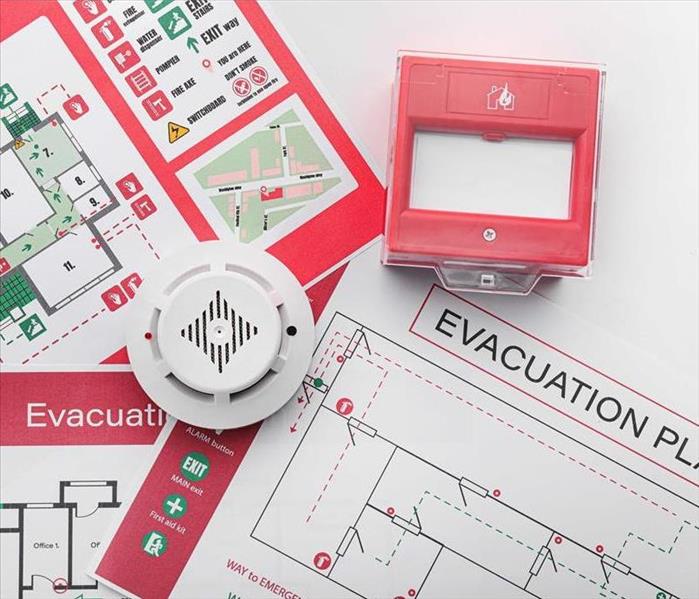5 Key Components of a Fire Escape Plan
5/12/2022 (Permalink)
Knowing that there are an estimated 100,000 commercial property fires a year, it’s vital that businesses in Clearfield, UT, plan for the unexpected. While a commercial fire restoration company will be able to take care of the property, business owners need a well-thought-out fire escape plan to ensure everyone on the property is safe. When developing a plan, below are five steps to take.
Key Components of a Fire Escape Plan
1. Identify Potential Hazards
The first step is determining the potential risks to your business. Is there a kitchen? Are portable space heaters used? Are extension cords over their limit? Take a tour of the facility and look for areas that may create added risk. Once those are discovered, come up with a solution for each and communicate any cooking or heating rules to everyone onsite.
2. Map Escape Routes
A fire escape plan is essential to a successful evacuation. A map should be created of the facility, including primary and alternate escape routes. When creating the map, ensure you take into consideration any employees who may have special needs. Once the best route is determined, ensure that the path is always clear of any obstacles, such as furniture. The mapped plan should be posted throughout the facility to ensure that it is easy to see if a fire does break out.
3. Assign Roles
Dealing with a fire is a chaotic situation. Even if people know where to go, there may easily be confusion and added stress. As part of the evacuation plan, specific roles should be assigned to specific individuals to assist in an emergency situation. This may include a chief fire warden, who holds responsibility for the overall event and planning, as well as an assistant to help alert employees.
For larger businesses, consider assigning people as route guides to assist people as they exit via the designated escape route and others as point personnel for using the fire extinguishers.
4. Develop a Communication Plan
While the first thoughts may be on the fire itself, it has the potential to affect other people. Staying in communication with clients and employees’ relatives is essential. Prepare a list of essential contacts, including local hospitals, clients, suppliers and employee contacts. This list should be easily accessible to the fire warden or assistant to help deal with the aftermath of the fire.
5. Practice the Emergency Escape Plan
Even if you have the best plan of action, you still need to ensure it works by having regular drills. Along with reinforcing confidence in your designated fire team, it provides everyone onsite with added peace of mind that they have practiced evacuating the building and will be ready for the real situation. After each drill, the team is more easily able to address potential issues that may arise or make changes to the overall plan for added safety measures. These drills also reinforce how important employees are to the business.
No matter how small a business is, it should always have a fire escape plan. Ensuring that everyone knows what to do and where to go increases the chances of a safe evacuation.




 24/7 Emergency Service
24/7 Emergency Service
